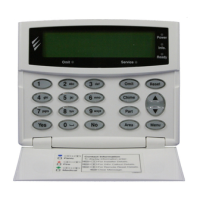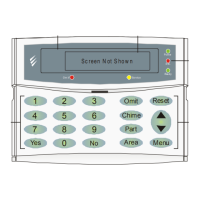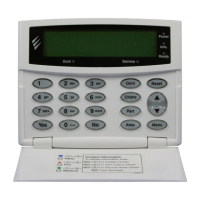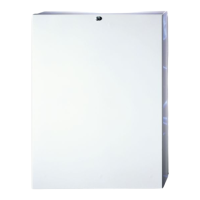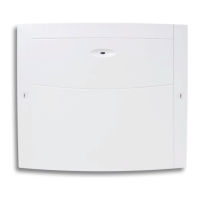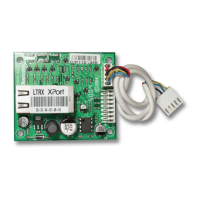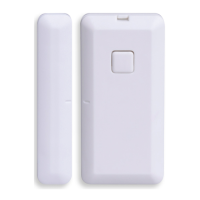Installation Premier 412/816/832 Installation Manual
10 INS159-13
Connecting AC Mains
The AC Mains supply is connected to a 3 way ‘Euro Type’ fused
terminal block, which is fitted with a 3.15A medium/slow blow fuse.
All other wiring MUST be carried out before AC mains is connected to the control
panel.
After connecting the AC Mains, fit the mains cover, this can be found in the spares
bag.
Connecting Batteries
Up to one 12V 7Ah battery can be fitted inside the control panel to
provide continued operation in the event of an AC mains failure.
All other wiring MUST be carried out before the battery is connected to the control
panel.
Connect the red battery lead to the positive terminal of the battery
and connect the black battery lead to the negative terminal of the
battery.
EN50131 Battery Installation
Step 1: Screw 2 x battery clamps into holes provided in the rear
of the panel.
Step 2: Fit battery into place, position the clamps against the
top face of the battery and tighten screws.
Connecting Devices to the Data Bus
Before connecting remote keypads and zone expanders,
isolate ALL power from the control panel (AC Mains &
Battery). Do not continue if there is still power present on the
control panel.
Connecting devices with power still present on the control panel may damage the
device or control panel and invalidate any warranty.
Remote keypads and zone expanders are all connected to the same
data terminals located at the bottom left hand corner of the control
panel and may be connected serially (daisy chain), in parallel (star)
or any combination of the two.
Wiring the Data Bus
The data bus is made up of four terminals incorporating power and
data. To ensure correct operation, all four terminals on the device
must be connected to the corresponding terminals on the control
panel, or previous device (see page 10 for wiring details). The table
below shows each terminal and its description:
Cable Type and Distances
For improved immunity to electrical noise Texecom recommend the
use of screened 4 core cable. The screen should be twisted
together and wired into the (–) terminal at the control panel only.
The maximum recommended distance for devices when using
standard 7/0.2 alarm cable is:
250m for each branch when using the star (parallel)
configuration
When using a daisy chain (series) configuration the maximum
distance will depend on the number of devices connected on
the chain. The more devices that are connected, the shorter
the distance to the last device (this is due to voltage drop in the
cable)
Whichever method of wiring configuration is used, ensure that the
voltage between the ‘+’ and ‘–’ terminals at each device is no lower
than 10.0V when the system is running on the standby battery.
Installing a Power Supply
When a power supply is installed, the 0V connections on the power
supply must be connected through to 0V on the control panel and
the +12V connection between the control panel and the device
must be disconnected (see figure below).
The table below shows maximum cable runs when one keypad or
expander is installed using standard 7/0.2 alarm cable with various
loads:
1. Keypad + 2 PIR’s @15mA
2. Expander + 2 PIR’s @15mA
3. Expander + 8 PIR’s @15mA
4. As No. 3 + 16 Speaker
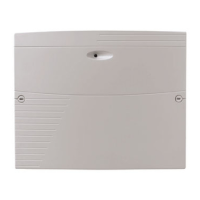
